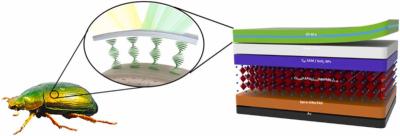Phosphorene nanoribbon-augmented perovskite solar cells show great promise
Researchers from the Imperial College of London and University College London have demonstrated the photovoltaic-boosting effect that phosphorene nanoribbons (PNRs) can bring to perovskite solar cells. When applied in tandem with a perovskite solar cell, PNR-boosted cells achieved an efficiency above 21%, which the researchers defined as "on par with traditional silicon cell output levels".

PNRs, first produced in 2019, have many theoretical use cases, including enhancing batteries, biomedical sensors, and quantum computing. The PNRs directly aided the perovskite cells' hole mobility, improving overall efficiency.






